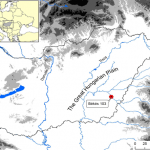Blog posted by Ákos Mengyan
Write Bronze Age stories with the help of numbers.
Think about trying to tell a story about someone or about a community through their material culture and their funerary practices. Is it difficult? I say it is. In the BAKOTA project’s 2018 season, we are trying to recognize a community through their known and excavated material culture. We are investigating a Bronze Age site in Southeastern Hungary to understand their social organization and to understand their life.

I am a part of the ceramic team, where we are analyzing the vessels and sherds from a Bronze Age cemetery and settlement. We are measuring their ornaments and their metrical data, so we can represent all vessels like numbers. This may sound a little bit boring, but it is worth it, because we can work with this data to tell their stories to the world.
The researchers believe that the Bronze Age is the first period in the human history where we have concrete evidence for the stratified society. They believe at that time, a warrier elite controlled the trade, settlements and movement in the tribes, during times of war and peace alike.
The methodology of discovering and analyzing lost material cultures is constantly developing. For example we are not just coding the vessels, we are using the GIS (Geographic Information System), so we can look at the original location of the graves. This is a great opportunity to look for groups of graves that were placed far away from the others. We can use the results of the earlier anthropological investigations to understand more about the dead. Other than the lab work, we are excavating more sections of the field to find more graves and to gain more information.
Hopefully at the end of the season, we will get a few more answers about this site. For example, every individual element varies by social units and burial form (inhumation, urn cremation, and scattered cremation), in the 4th period of the cemetery. Furthermore, I will be comparing element variations between vessel forms and will try to identify changes in individual elements over time. This season the ceramic team and I are investigating the cemetery through the vessel’s forms and ornaments, looking for patterns and trying to draw conclusions about their life through these analyses.
http://www.regeszet.org.hu/images/angol/a_006.pdf
http://www.hungarianarchaeology.hu/wp-content/uploads/2014/11/eng_duffy_14O.pdf
